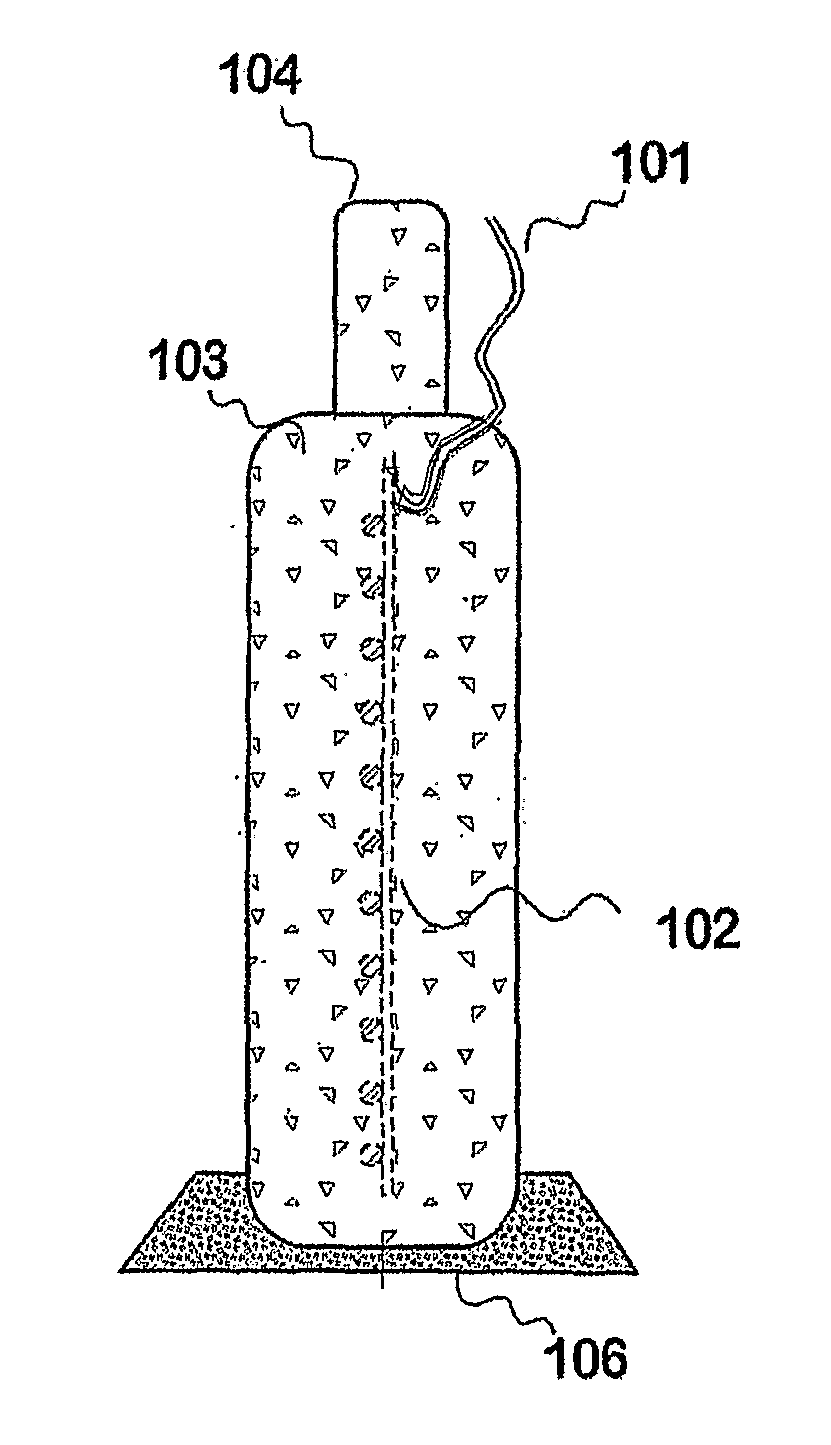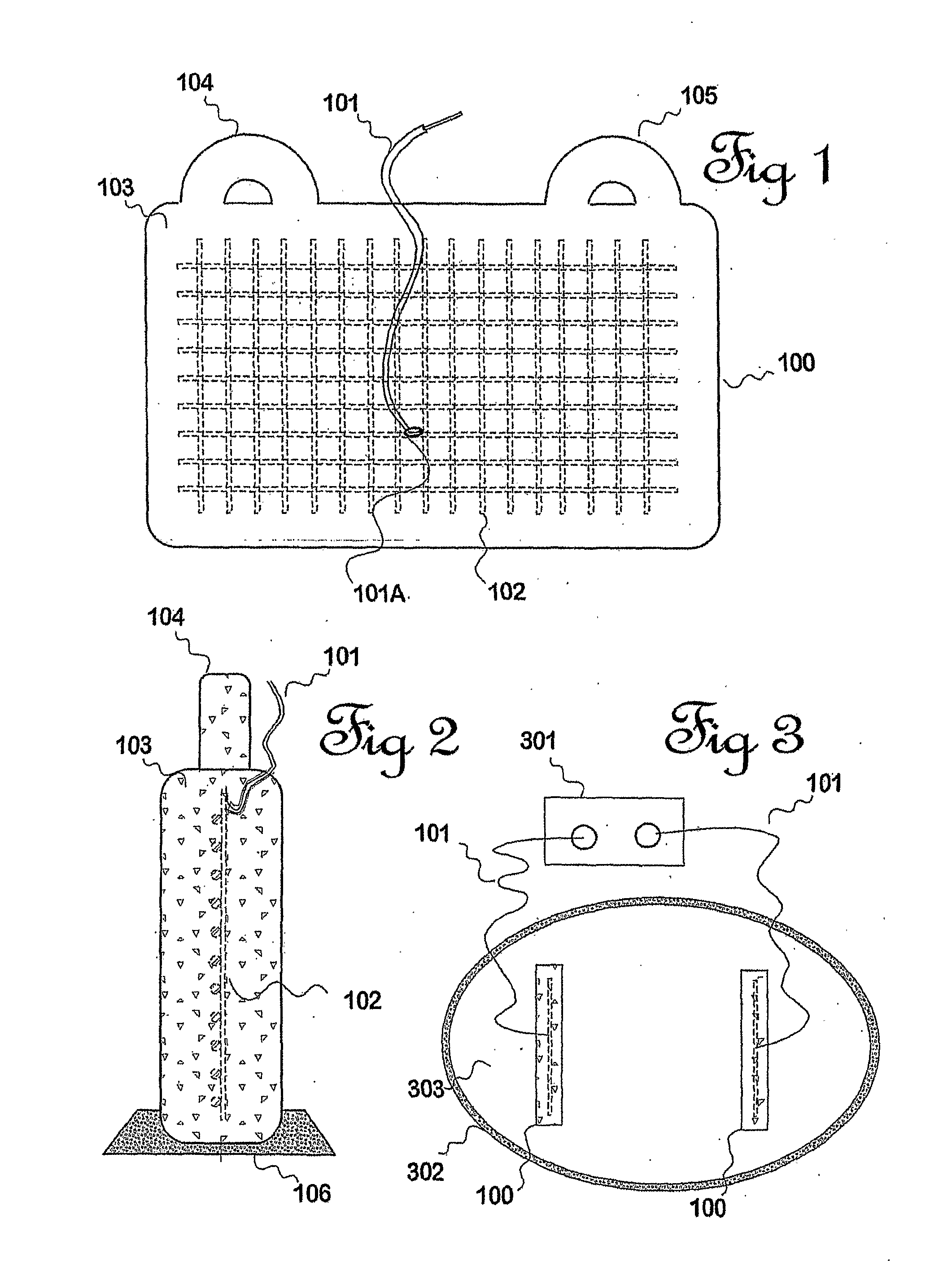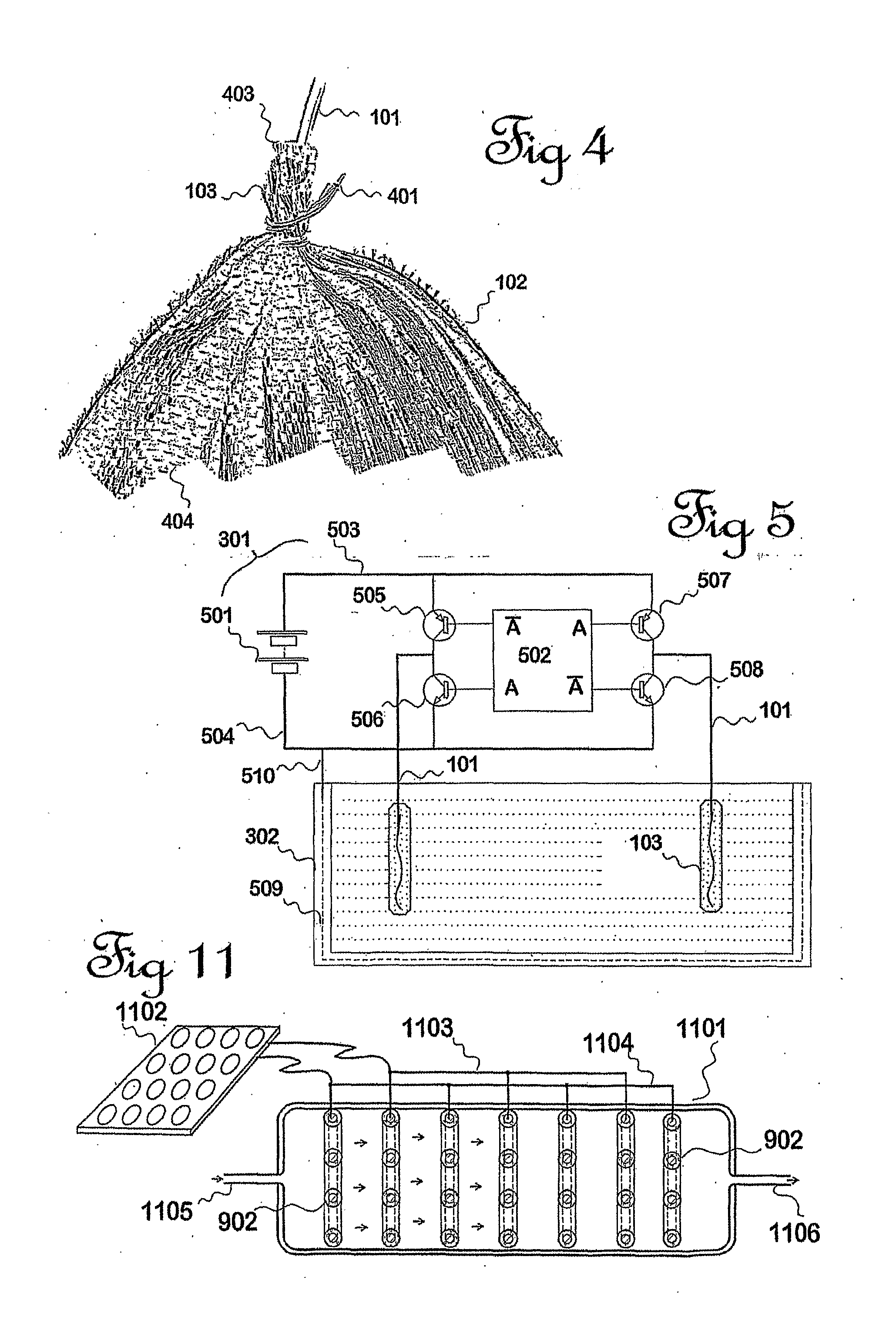Electrodes for electrolysis of water
a technology of electrolysis apparatus and electrolysis chamber, which is applied in the direction of electrolysis apparatus, specific water treatment objectives, water/sludge/sewage treatment, etc., can solve the problems of no prior art identification, some risk of deterioration of the tank wall, etc., and achieve the effect of faster biochemical oxidation
- Summary
- Abstract
- Description
- Claims
- Application Information
AI Technical Summary
Benefits of technology
Problems solved by technology
Method used
Image
Examples
example 1
Concrete-Covered Electrodes
[0057]See FIGS. 1, 2, 3, 9 and 10. FIG. 1 is a diagram of a typical electrode 100 of this invention. It has an inner core comprised of a conductive material such as a metal mesh 102 having at least one conducting lead 101 brought to the exterior. A non-metallic conductor 102 such as an array or a mesh of carbon fibres may also be used. Optional lugs or handles 104, 105 or other lifting means may be provided so that the electrode can be immersed in a body of water with only the insulated conductor 101 brought out to an external source of electricity. Preferably the lugs or handles will not, even if cracked, expose the inner core to the aqueous medium. The inner core may also have a reinforcing function for the concrete once it has set. The outer coating 103 is made of a porous conductive settable material preferably though not essentially one based on Portland cement which has been described in the Background. Certain kinds of cement make a concrete that is...
example 2
Application in Waste Water
[0079]Construction of the preferred concrete electrodes has been described in Example 1. This Example describes a process involving continuous low-level electrolysis for facilitating the secondary or tertiary treatment of wastewater. The experiment was carried out on a waste water system servicing a household of 7 adults. It is believed that the electrolysis acts to treat the water in several ways, including supplementing the dissolved oxygen concentration, and may also provide some gentle stirring.
[0080]FIG. 3 is a top view of an active region—a pond in a wastewater plant—wherein two electrodes each labelled 103 are suspended within the tank 302, filled with water to be processed 303. A wire 101 connects between each electrode and a terminal on a preferably alternating power supply 301. The installation may operate in darkness or in light. Here, aerobic micro-organisms are encouraged to proliferate in order to decompose of wastewater, in order to effect a ...
example 2a
Making Potable Water
[0084]In many parts of the world, available drinking water in rivers or wells is contaminated and is, in effect, waste water. In order to make such water potable apparatus as shown in FIG. 11 may be used A preferably covered wooden or plastic box or other non-conductive waterproof container 1101, here shown from above, holds a series of open-mesh concrete-coated electrodes 902, each like the electrode 902 in FIG. 9. These are alternately connected to one electrical bus 1103 or another, 1104 as shown, to serve either as an anode and a cathode (example: CACACAC). The buses are supplied from a suitable power supply. For example the stack can be provided with DC power from a solar cell array 1102 and, for simplicity, polarity reversal can be provided manually on perhaps a daily basis by means of a switch, as will be obvious to a reader skilled in the relevant arts. Water fed in at one end 1105 must pass through the holes in the stack of Mesh electrodes, is exposed to...
PUM
| Property | Measurement | Unit |
|---|---|---|
| current density | aaaaa | aaaaa |
| thickness | aaaaa | aaaaa |
| thickness | aaaaa | aaaaa |
Abstract
Description
Claims
Application Information
 Login to View More
Login to View More - R&D
- Intellectual Property
- Life Sciences
- Materials
- Tech Scout
- Unparalleled Data Quality
- Higher Quality Content
- 60% Fewer Hallucinations
Browse by: Latest US Patents, China's latest patents, Technical Efficacy Thesaurus, Application Domain, Technology Topic, Popular Technical Reports.
© 2025 PatSnap. All rights reserved.Legal|Privacy policy|Modern Slavery Act Transparency Statement|Sitemap|About US| Contact US: help@patsnap.com



